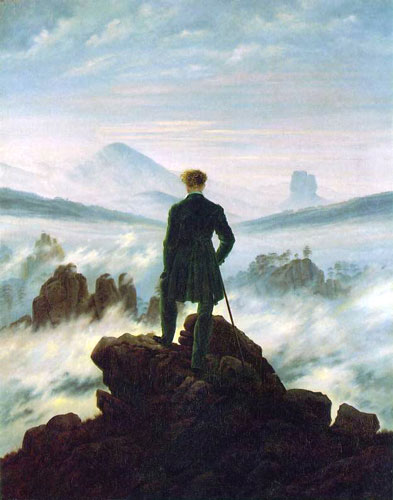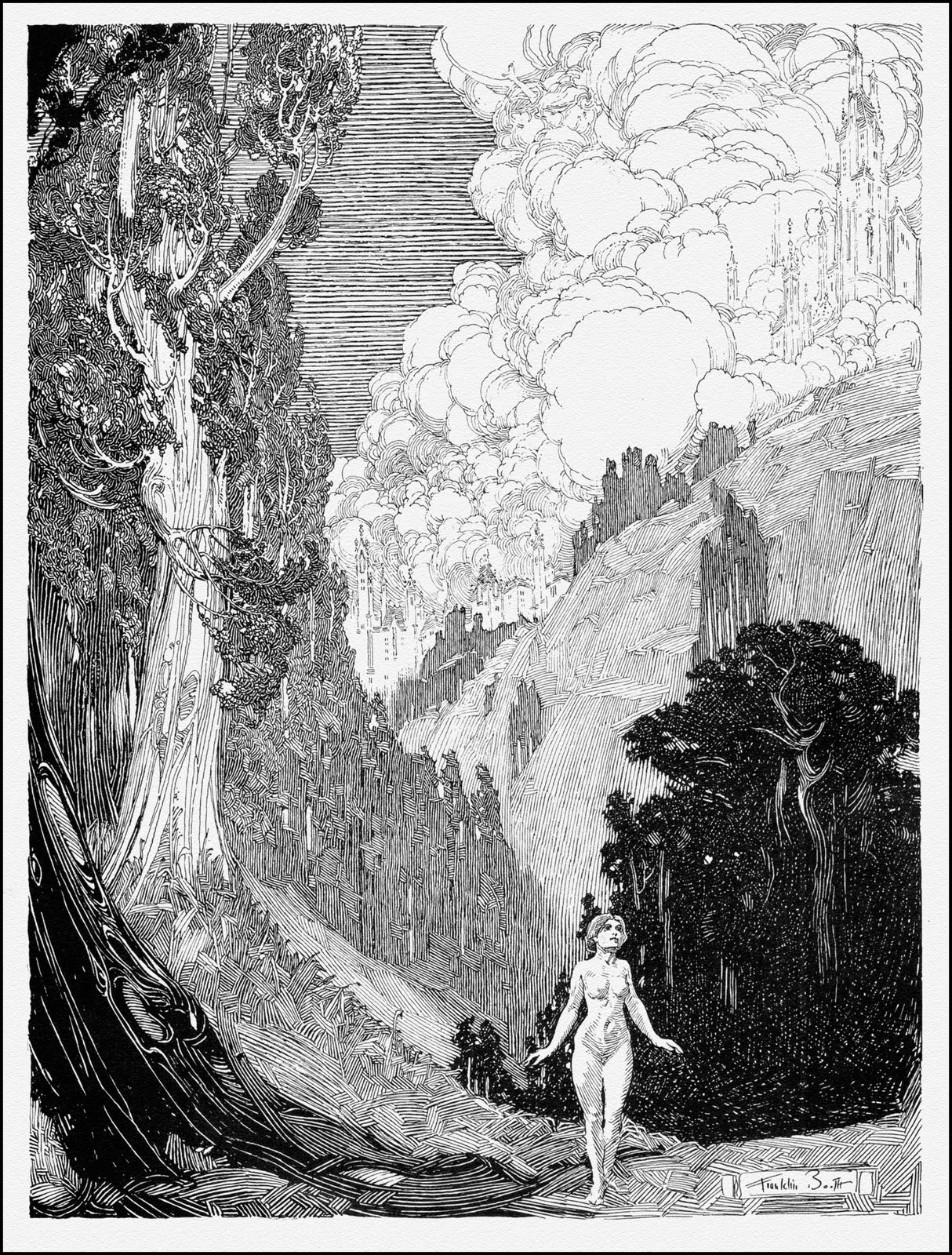This week it’s one of my very favorite pieces, and one from the previous incarnation of the “This Week’s Art” threads. This is Caspar David Friedrich’s A Wanderer Above a Sea of Mist, a stunning piece for me and one that I will eventually (when I have wallspace) show proudly on my own wall.
For me, this is one of those pieces that shows the pinnacle of what can be achieved in art. There’s plenty of detail here, but it’s forgotten in the simplicity and strength of the content in the image. I feel Friedrich was trying to get across what it’s like to have the creative spark inside, to come up to the edge of reality and see that there is far more than you thought was there.
Many have pointed this to be the perfect image for the Romanticism movement of the early 19th century, and I would agree. The Romanticists wanted to bring emotion and strength back into an art marketplace that had been increasingly becoming more strict and more refined. They yearned for a looser, more natural, and more emotional vision in art, and Friedrich’s piece here is perfectly representative of that.
We are looking through the eyes of the artist, or at least how he seems himself, and Friedrich uses composition very well to enhance his presentation. The structure and forms of the man, coupled with the angles in the distance, bring your eye right back to the man each time. He places the full darkness at the bottom of the image, and with the strong light colors above it keeps your eye in check, and aims it where it’s supposed to be.
Friedrich also uses his spare colors and tones wonderfully, and they give an overall sense of depth. The strong tones of the foreground, what I would consider the artist’s “reality”, give way to the soft, yet breathtaking valley below. It’s a good example of where a small use of color can go a long way. He uses just the slightest tones for hills and trees in the fog, which grounds us in the creative air of the fog.
For the artist in me, this is what I hope to see in my mind when I’m working on art. I hope to come up to my own cliff, to the edge of my own reality, and look deep into the abyss. Friedrich here has allowed just that, a glimpse into the vastness of creativity, and yet a clear grounding throughout. He seems to say that we must always go the the edge to find out who we are, and that there is no limit to what we might find there.
Opinions?
Russ


